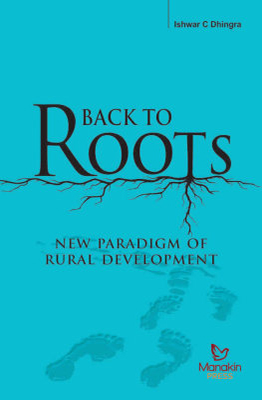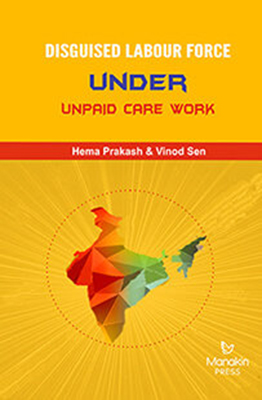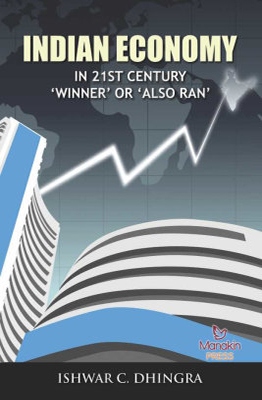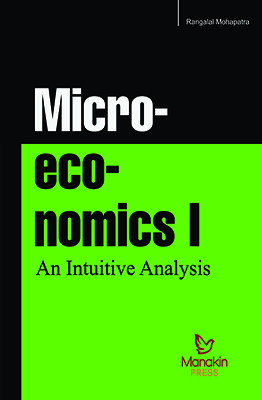Back to Roots Renewed Policy Focus on Indian Rural Economy
₹1,595.00
Ishwar C Dhingra | Category: EconomicsBook DetailsISBN: 9789386677204
YOP: 2018
Pages: 448Order also on
The current Black Swan event conceived and implemented by the Union Government has left bare open dark side in one and all sectors of the economy. Called Demonetisation (follow on Remonetisation) it is no more seen as a way to demolish parallel economy alone, it has emerged out as a tool of transformation of the economy. Layer by layer new inroads has been seen and probed into. Most of the time weaknesses holding back the progress have been identified. That is just one big gain of Demonetisation, even when there is plenty more. Immediately after the process got set to go in operation a major cause of worry was the realisation that the status of rural sector in the overall strategy was underestimated by the programmers and that could become the major obstacle, as was the Hanuman’s tail in one of the episodes in Mahabharata. No wonder, the rural sector became the top priority sector for redemption and improvement. Just as in the early 1950s it was stressed by the planners that everything can wait but not agriculture. In 2016 it was made clear that it was the rural the sector of the Economy that needed serious attention if the transformed Indian economy was to march successfully to the goal of Sustained, Inclusive and Rapid Growth. However, the structure of rural sector presently is different in colour, composition and texture than what it was in the 1950s. Logically, the components of a strategy to uplift the sector have to be different. The literature on the subject abounds with research studies and scholarly write-ups by professionals and rich academicians. We hope to integrate these studies and make a scheme for rural uplift in India.
1. Transformation of Indian Economy
2. Rural Development Concept, Components and Approaches
3. Rural Sector in India
4. Rural Development in India
5. Rural Population and Labour
6. Poverty in Rural India
7. Employment and Unemployment in Rural India
8. Rural Infrastructure
9. Natural Resources: Base of Indian Rural Economy
10. Green Rural Economy
11. Agriculture and Economic Development
12. Technological Changes in Agriculture: Agricultural Inputs
13. Land Reforms in India
14. Provision of Non-Farm Services: Rural Finance and Marketing
15. Food Security and Agriculture Price Policy
16. Allied Activities
17. Rural Non-farm Sector (RNFS)
18. Related Issues in Rural Development
Appendix
The current Black Swan event conceived and implemented by the Union Government has left bare open dark side in one and all sectors of the economy. Called Demonetisation (follow on Remonetisation) it is no more seen as a way to demolish parallel economy alone, it has emerged out as a tool of transformation of the economy. Layer by layer new inroads has been seen and probed into. Most of the time weaknesses holding back the progress have been identified. That is just one big gain of Demonetisation, even when there is plenty more. Immediately after the process got set to go in operation a major cause of worry was the realisation that the status of rural sector in the overall strategy was underestimated by the programmers and that could become the major obstacle, as was the Hanuman’s tail in one of the episodes in Mahabharata. No wonder, the rural sector became the top priority sector for redemption and improvement. Just as in the early 1950s it was stressed by the planners that everything can wait but not agriculture. In 2016 it was made clear that it was the rural the sector of the Economy that needed serious attention if the transformed Indian economy was to march successfully to the goal of Sustained, Inclusive and Rapid Growth. However, the structure of rural sector presently is different in colour, composition and texture than what it was in the 1950s. Logically, the components of a strategy to uplift the sector have to be different. The literature on the subject abounds with research studies and scholarly write-ups by professionals and rich academicians. We hope to integrate these studies and make a scheme for rural uplift in India.
1. Transformation of Indian Economy
2. Rural Development Concept, Components and Approaches
3. Rural Sector in India
4. Rural Development in India
5. Rural Population and Labour
6. Poverty in Rural India
7. Employment and Unemployment in Rural India
8. Rural Infrastructure
9. Natural Resources: Base of Indian Rural Economy
10. Green Rural Economy
11. Agriculture and Economic Development
12. Technological Changes in Agriculture: Agricultural Inputs
13. Land Reforms in India
14. Provision of Non-Farm Services: Rural Finance and Marketing
15. Food Security and Agriculture Price Policy
16. Allied Activities
17. Rural Non-farm Sector (RNFS)
18. Related Issues in Rural Development
Appendix
| Weight | 1.145 kg |
|---|---|
| Dimensions | 24.2 × 16.5 × 3.5 cm |
| yop |
2018 |
| subject-category |
Economics |
| isbn |
9789386677204 |











